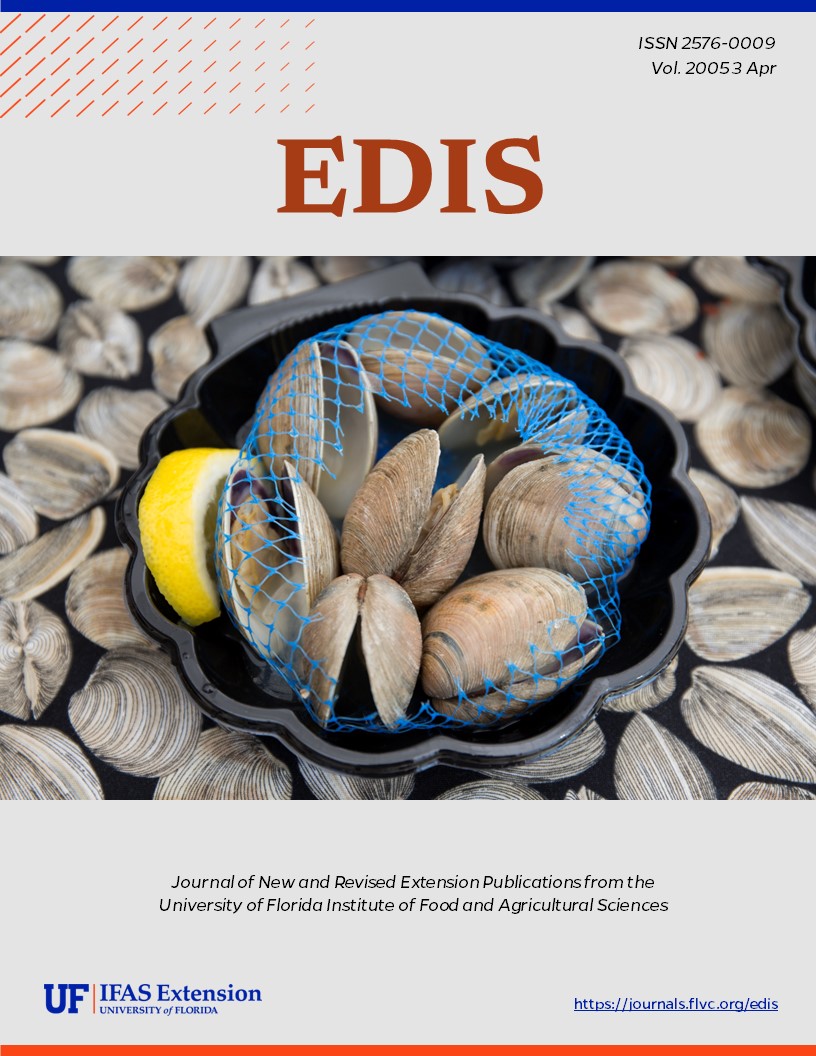Abstract
In Florida, the name "yellow fly" is commonly used to describe a group of about a dozen different yellow-bodied biting flies in the Tabanidae family. However, Florida tabanid experts recognize only one species, Diachlorus ferrugatus (Fabricius), as the "true" yellow fly. (Cilek 2000a). In Belize this species is known as the "doctor fly." The yellow fly is a fierce biter. Like mosquitoes, it is the female fly that is responsible for inflicting a bite. The males are mainly pollen and nectar feeders. Tabanids are most likely encountered in hot summer and early fall weather. They are active during daylight hours. This document is EENY-320 (originally published as DPI Entomology Circular 139), one of a series of Featured Creatures from the Entomology and Nematology Department, Florida Cooperative Extension Service, Institute of Food and Agricultural Sciences, University of Florida. Published: April 2004.
EENY320/IN595: Yellow Fly, Diachlorus ferrugatus (Fabricius) (Insecta: Diptera: Tabanidae) (ufl.edu)
References
Banks N. 1904. The "yellow fly" of the Dismal Swamp. Entomological News 15: 290-291.
Bequaert J. 1924. Report of an entomological trip to the Truxillo division, Honduras, to investigate the sand-fly problem. 13th Annual Report Medical Department United Fruit Company p. 193-206.
Bequaert J. 1931. Tabanidae of the peninsula of Yucatan, Mexico, with descriptions of new species. Journal of the New York Entomological Society 39: 533-553, fig. 1.
Blickle RL. 1958. Eye color of male Diachlorus ferrugatus (Fab.). Entomological News 69: 230.
Cilek JE. (2000a). The yellow-biting flies of Florida. Ent Guide. http://pherec.org/entguides/EntGuide1.html (5 March 2004).
Cilek JE, Medrano G. (2000b). Public perception of a trap to locally reduce yellow fly (Diptera: Tabanidae) nuisance in residential areas of northeastern Florida. Florida Entomologist 83:26-30. https://doi.org/10.2307/3496224
Dame D, Fasulo TR. (2003). Flies. Public Health Pesticide Applicator Training Manual. http://vector.ifas.ufl.edu/ (05 March 2004).
Fairchild GB. 1937. A preliminary list of the Tabanidae of Florida. Florida Entomologist 19: 58-63; 20: 10-11. https://doi.org/10.2307/3492938
Fairchild GB. 1972. Notes on Neotropical Tabanidae. XII. The genus Diachlorus O.S. Florida Entomologist. 55: 219-229. https://doi.org/10.2307/3493370
Goodwin JT. 1973. Immature stages of some eastern Nearctic Tabanidae. II. Genera of the tribe Diachlorini. Journal of the Georgia Entomological Society 8: 5-11, fig. 1-6.
Jones CM., Anthony DW. 1964. The Tabanidae (Diptera) of Florida. USDA Technical Bulletin 1295. 85 p., fig. 1-18.
Koehler PG, Short DE, Fasulo TR. (1998). Pests In and Around the Home. UF/IFAS. SW-126.
Mease JA. 1943. Deer fly desensitization. Journal of the American Medical Association 122: 227. https://doi.org/10.1001/jama.1943.72840210001005
Philip CB. 1947. A catalogue of the blood-sucking fly family Tabanidae (horse flies and deer flies) of the Nearctic region north of Mexico. American Midland Naturalist 37: 257-324. https://doi.org/10.2307/2421658
Shewell GE. 1947. The male of Diachlorus ferrugatus (Fab.). Canadian Entomologist 79: 32. https://doi.org/10.4039/Ent7932-2
Squitier JM. (2003). Deer flies, yellow flies and horse flies - Chrysops, Diachlorus, and Tabanus spp. UF/IFAS Featured Creatures. http://edis.ifas.ufl.edu/IN155 (5 March 2004). https://doi.org/10.32473/edis-in155-2003
Stone A, et al. 1965. A catalogue of the Diptera of America north of Mexico. USDA Agricultural Handbook 276. 1696 p.
Williams P. 1971. Some records of Tabanidae (Diptera) from British Honduras (Belize). Journal of Medical Entomology 8: 98-107. https://doi.org/10.1093/jmedent/8.1.98
Unless otherwise specified, articles published in the EDIS journal after January 1, 2024 are licensed under a Creative Commons Attribution-NonCommercial-NoDerivs 4.0 International (CC BY-NC-ND 4.0) license.

